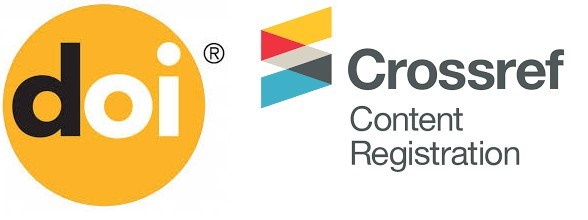Pengembangan Kamus Al-Af’āl dalam Meningkatkan Kemahiran Menulis pada Mahasiswa Prodi Pendidikan Bahasa Arab IAIN Pontianak
DOI:
https://doi.org/10.32699/liar.v4i1.1255Keywords:
Learning Media, Learning Outcomes, Learning to WriteAbstract
Abstract
Many students have difficulty in learning to write which is caused by the absence of a representative learning media. This study aims to create a media that makes it easier for students to find forms of verb changes in Arabic. This research uses Research and development (R&D) design which consists of eight steps: (1) identification of potential and problems, (2) data collection, (3) product design, (4) validation, (5) product revision, (6) small-scale product trials, (7) product revisions, and (8) large-scale use trials. The research data were obtained using interview, documentation and observation techniques. The results of the experts' validation showed that the average percentage rating are 80.47% in terms of media and 84.44% in terms of material. Therefore, the Al-Af’al dictionary is considered very feasible to be used in learning. The results of large-scale trials indicate that Al-Af’al Dictionary media can improve learning outcomes. The results of statistical analysis show that the value of the T test is greater than the T table of 11.03: 2.059, which means there is a significant increase between pre-test and post-test learning outcomes through the use of the Al-Af’al Dictionary.
Keywords: Learning Media, Learning Outcomes, Learning to Write
References
An-Naqy, Muhammad Kamil. Ta’lim Al-Lughah Al-‘Arabiyyah Li An-Nathiqin Bi Lughatin Ukhra. Arab Saudi: Jami’ah Umm Al-Qura, n.d.
Arikunto, S. Dasar-Dasar Evaluasi Pendidikan. Jakarta: Bumi Aksara, 2009.
Arsyad, Azhar. Media Pembelajaran. Jakarta: PT. Raja Grafindo Persada, 2007.
Fadli, Rahman, Nurmasari Sartono, and Ade Suryanda. “Pengembangan Kamus Berbasis Sistem Operasi Telepon Pintar Pada Materi Biologi SMA Kelas XI.” Jurnal Pendidikan Matematika Dan IPA 8, no. 2 (2017): 10–17.
Karo-karo S., Rasyid, and Rohani. “Manfaat Media Dalam Pembelajaran.” Jurnal Axiom VII, no. 1 (2018).
Mahesta, Lourenzia Kurnia. “Pengembangan Media Kamus Digital Sistem Isyarat Bahasa Indonesia Berbasis Android Di SMP-LB Karya Mulia Surabaya.” Jurnal Mahasiswa Teknologi Pendidikan 4, no. 4 (2012): 1–7.
Makruf, Imam. Strategi Pembelajaran Bahasa Arab Aktif. Semarang: Need’s Press, 2009.
Nugroho, Setyo. “Pengembangan Media Pembelajaran Kamus Saku Unggah-Ungguh Basa Jawa Kelas IV SDN Tambakrejo Purworejo.” Jurnal Pendidikan Guru Sekolah Dasar 4, no. 4 (2015): 1–11.
Shalahuddin, Mahfud. Media Pembelajaran Agama. Bandung: Bina Islam, 1986.
Sugiyono. Metode Penelitian Kuantitatif, Kualitatif Dan R&D. Bandung: Alfabeta, 2013.
Sukmadinata. Metodologi Penelitian. Bandung: Remaja Rosdakarya, 2016.
Sukmadinata, Nana Syaodih. Metode Penelitian Pendidikan. V. Bandung: PT. Remaja Rosdakarya, 2009.
Sutjipto, Bambang, and Cecep Kustandi. Media Pembelajaran Manual Dan Digital. Edited by Gahlia Indonesa. Bogor, 2002.
Tarigan, Henry Guntur. Menulis Sebagai Suatu Keterampilan Berbahasa. Bandung: Angkasa, 2013.
Downloads
Published
Issue
Section
License
Authors who publish with this journal agree to the following terms:
a. Authors retain copyright and grant the journal right of first publication with the work simultaneously licensed under a Creative Commons Attribution-ShareAlike 4.0 International License. that allows others to share the work with an acknowledgement of the work's authorship and initial publication in this journal.
b. Authors are able to enter into separate, additional contractual arrangements for the non-exclusive distribution of the journal's published version of the work (e.g., post it to an institutional repository or publish it in a book), with an acknowledgement of its initial publication in this journal.
c. Authors are permitted and encouraged to post their work online (e.g., in institutional repositories or on their website) prior to and during the submission process, as it can lead to productive exchanges, as well as earlier and greater citation of published work (See The Effect of Open Access).












